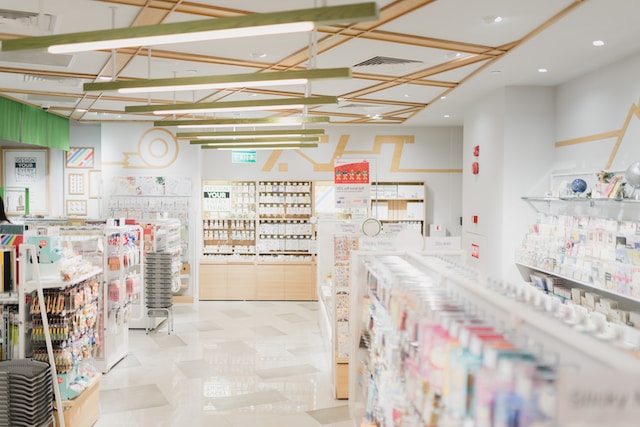You can do a lot to save money on in-store pharmacy services. Drug prices vary by the pharmacy; you can even use free apps to compare prices.
You may also want to switch long-term meds to 90-day supplies, take advantage of pharmaceutical company discounts or check to see if your insurance offers a copay assistance program for certain medications.
Generics
Generics are the same active ingredients as brand-name medicines but are cheaper. They are cheaper because generic manufacturers do not have to repeat the expensive safety and effectiveness testing that brand drug companies must do.
The FDA has set standards for all drugs, generic or brand name, to be considered safe and effective. These standards cover everything from dosage, form and route of administration to strength, labeling, and safety.
Another way to save on your prescriptions is to shop for a discount pharmacy. Some pharmacies and insurance plans offer discounts if you buy more than a one-month medicine supply.
You can also get free generic samples to try before buying them. However, more is needed to give you a complete picture of a medication’s side effects and effectiveness.
Some people are allergic or sensitive to inactive ingredients found in a generic version of a drug. You can tell your doctor if you have any of these conditions, and they may be able to prescribe a different medication for you.
In addition, some inactive ingredients can affect how well the medicine works or cause adverse side effects. If you have a problem with these, you can ask your doctor to substitute an alternative drug or add “Dispense as Written” (DAW) to your prescription.
When you go to the pharmacy, ask if they have a program that offers discounted generic medicines. Many grocery stores and some healthcare stores have these programs.
Preferred pharmacies
Preferred pharmacies offer lower prescription drug costs than standard pharmacies in your plan’s network. Using selected pharmacies can help you save money, mainly if covered by a Medicare Part D drug plan.
In the United States, 85% of Medicare drug plans offer preferred pharmacies in their networks. These pharmacies usually have negotiated discounts on your drugs and charge lower copayments or coinsurance than standard pharmacies.
Getting the most out of your Medicare plan’s pharmacy benefits involves researching and analyzing your options. The size of the plan’s pharmacy network, the variety of pharmacies, and whether you can get home delivery are all factors to consider.
For routine medications like cholesterol meds, try to fill your prescription at a network pharmacy where you can take advantage of their discounted drug prices with savings like CVS coupons. You may also find discounts for certain brand-name drugs at local supermarkets and grocery stores.
Some plans have special rewards programs for members and buyers that allow them to receive cash discounts on future purchases. These discounts can save money and help you avoid the Coverage Gap (or donut hole) if you take many prescriptions or high-cost brand-name drugs.
The Academy of Managed Care Pharmacy supports expanding preferred pharmacy networks because they lower prescription drug spending, improve access to health services, and are cost-effective. The cost savings that beneficiaries enjoy under these models are substantial, and they are a powerful tool to incentivize quality medication utilization while reducing total healthcare costs.
Discount Cards
Prescription discount cards help patients pay less for their medications. These cards are available from many pharmacies and doctor’s offices. They can be downloaded to a mobile app or printed at the pharmacy or doctor’s office.
Drug discount cards can save you up to 80% off the retail price of your prescriptions at participating pharmacies. They are free and easy to use. Present your card at the pharmacy and ask the pharmacist to compare the discounted price to your insurance cost.
The negotiated discounted price is the central part of the discount that most discount card programs offer. This is often a percentage of the cash price and is arranged by the discount program with the help of a pharmacy benefit manager (PBM). The PBM may negotiate discounts on all drugs or only select certain brands or medicines.
These discounts are a way to make money for the pharmacy while allowing patients to purchase their medications at lower prices. In return, the pharmacy pays a small referral fee to the discount card company for every user purchase.
In addition to discounting the medication price, the program can save users money on services like prescription delivery and doctor visits. Some of these savings can be even greater than the discounted price.
Consumer Reports tried to determine the prices of various prescription drugs using discount cards. They found that the best card for checking prices was the one that gave them a list of all the medicines that were available at nearby stores.
However, Consumer Reports says that getting prices from drugstores with these cards can be challenging. They also say that the savings sometimes add up.
In-network pharmacies
In-store pharmacy services are more than just places to pick up your prescriptions – they can also help you get savings. Pharmacists can work with you and your doctors to find the best medication prices, from generics to brand-name drugs.
Some drug plans have special discounts or copays to help you save money when filling prescriptions at an in-network pharmacy. These benefits can be significant if you have high drug costs or are on a budget.
For example, if you take a blood pressure medication that costs you $230 per month, you could save hundreds of dollars by using an in-network pharmacy to fill your prescriptions. Alternatively, you can pay the total cost of the prescription at the time of purchase and then submit a claim for reimbursement from your plan.
Your plan may also offer a discount on generics. You can use this benefit to save even more when buying prescriptions at an in-network generic pharmacy. You’ll need to submit a prescription drug claim form and your receipt.
Most plans offer a list of in-network pharmacies that you can use to save money on your prescriptions. These lists can include both specialty pharmacies and retail pharmacies.
You can also save money by using mail-order pharmacies. This can help you save money on some medications and be a convenient traveling option.





